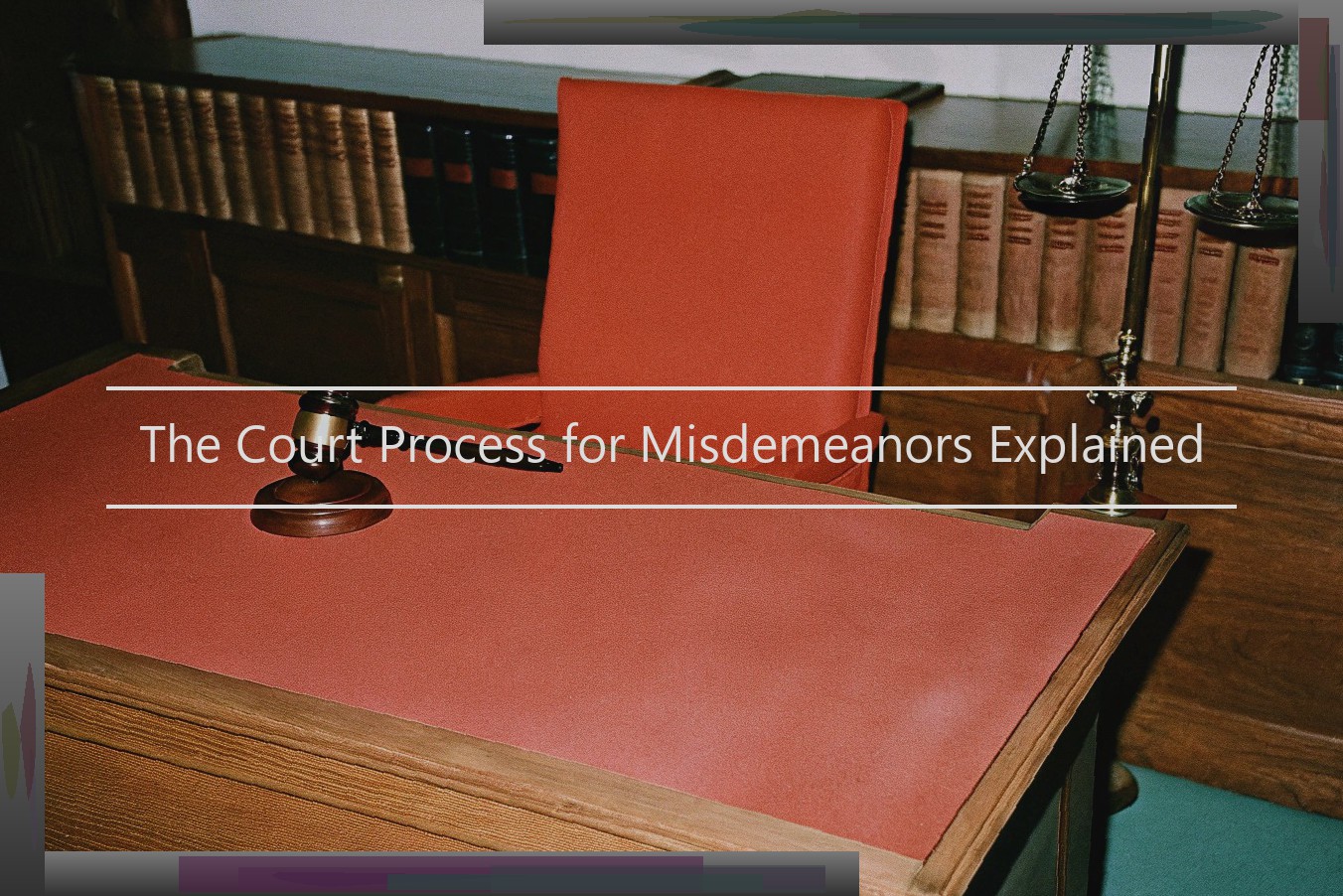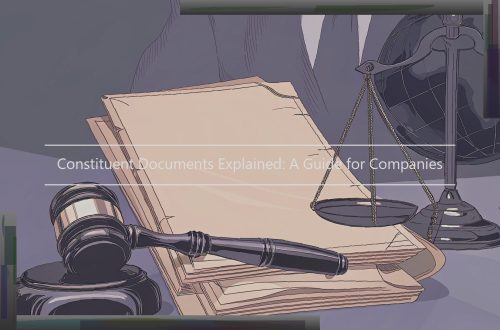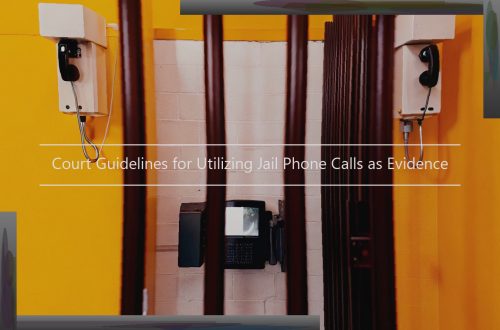The Court Process for Misdemeanors Explained
What Constitutes a Misdemeanor?
A misdemeanor is a crime that is less severe than a felony but more severe than an infraction. In many states, misdemeanors are generally defined by a statute or ordinance that prescribes a punishment upon conviction. A typical misdemeanor is punishable by a year or less in prison (or jail) and/or a fine or other penalty.
In most common law jurisdictions, the harshest punishment for a misdemeanor is one year of incarceration, however some states have moved towards using additional sentencing options including house arrest, work release programs, and treatment programs. In federal cases, the harshest punishment for a misdemeanor is six months imprisonment.
Some states classify misdemeanors into different classes based on the severity of the alleged offense. For example, a class A or B misdemeanor may carry a harsher penalty than a class C or D misdemeanor.
The majority of criminal offenses fall into two categories: Misdemeanor or Felony , however there is typically another lesser included criminal offense called an Infraction. As a general rule, an Infraction is an offense that is punishable by a fine, but not by imprisonment or probation.
Further distinctions are made between Petty or Municipal misdemeanors and Gross or Felony misdemeanors. Petty misdemeanors are the least severe and typically carry penalties such as a small fine, incarceration of up to six months, or both while gross misdemeanors are more serious. Gross misdemeanors, though they are only charged as a misdemeanor, typically carry a harsher sentence than a petty misdemeanor with a more severe fine and incarceration of up to one year.
Common misdemeanor crimes include DWI offenses, Simple Assault, Petit Larceny, Criminal Mischief, Resisting Arrest, Alcohol Offenses, Misdemeanor Drug Offenses, Theft and Shoplifting.

First Arrest and Citation
The initial arrest for a misdemeanor is often conducted by law enforcement officers. The arrest may include the issuance of a citation or notice to appear in court instead of an arrest. The notice to appear contains the same information as a citation, except if an individual misses a court date, a bench warrant will likely be issued. Otherwise, the process is the same. Understanding rights and obligations at this stage is critical, especially when a citation or notice to appear is issued, so contact a competent criminal defense attorney to discuss the situation before discarding the document or handling it with indifference.
Arraignment Process
The arraignment for a misdemeanor charge is relatively simple and quick. If a defendant has hired legal representation prior to the arraignment, the attorney will often enter an appearance on behalf of the defendant and move for a continuance to allow them to have sufficient time to investigate the case. Depending on the charges, there will be no plea entered at the arraignment unless it is a simple carelessly driving matter, which is a ticket for driving with excessive care, or a guilty plea to an infraction (such as speeding). Defendants should never enter a plea without consultation with their attorney.
The arraignment process is designed to inform you of the charges and confirm information that you have already provided to law enforcement when being booked into custody. Remember: Tell the truth and tell the truth again. Materials required to be provided by the court during arraignment include an advisement of rights and a waiver of rights form. In most cases, no reasonable bond will be required, but occasionally there are special considerations that the court will require. In such cases, you will be asked to adhere to specific terms. Failure to adhere to these terms can result in problems for you — and the police will attempt to arrest you on the terms you provided upon booking.
It is imperative that you meet with your attorney in advance of the arraignment. If you do not have an attorney, you should obtain one immediately.
Pre-Trial Hearings
The pre-trial stage of a misdemeanor case is a time to make key decisions regarding your case with your Criminal Defense Lawyer. Most people are familiar with the idea of a trial where a verdict is decided by a jury, but few are aware of the pre-trial process involved with a misdemeanor criminal case.
Pre-trial proceedings begin after arraignment in a misdemeanor case. It is at this point that the judge will set further court dates and conditions for your release. Conditions of release may include terms such as no contact with the victim or a ban on gun possession.
In some circumstances, the court will consider pre-trial motions. A motion is a formal request to the court to do something like dismiss a particular charge against you or suppress evidence. A motion could also be filed requesting the presence of witnesses. In many cases, a motion must be made by the lawyer before the beginning of the trial. If the motion is made after the trial starts, it will likely be denied.
A plea bargain is a mutually satisfactory resolution for you and the state. Plea bargains most often occur at the conclusion of pre-trial proceedings when the court usually asks the defendant if he/she wants to enter a plea after the defense attorney and the prosecutor have negotiated one or more plea offers. In some misdemeanor cases, there is no plea bargain offered.
Discovery is a formal request to the prosecutor for evidence or information related to your case. Discovery arises because there is an exchange of information between you, your lawyer and the prosecutor. This allows your lawyer to review all the facts and evidence the prosecution has found and he or she can then determine what your options are going forward.
Trial for a Misdemeanor
Once the trial has been set, and you have entered a not-guilty plea, the case will be scheduled for trial. Depending on what the charge is, this could be at various stages of the court process, but for our intents and purposes, we will assume it has been scheduled in Riverside County Superior Court. Trials are usually dealt with around 8:30 a.m., and when the People’s case is called, the prosecutor will be ready to present the evidence to the jury, or to the judge, depending on whether the defendant wants a court trial, or a jury trial. If it is a jury trial, the jury will be selected first, and the defendant will have a chance to strike jurors for cause before the trial commences. At a class B misdemeanor, the maximum punishment imposed will be 180 days in jail. If the defendant has no prior convictions, the Prosecution would have to prove the case beyond a reasonable doubt in order to obtain a conviction at all. The present range of punishment for a Class C is either a fine to not exceed $500.00 (or in some cases a fine not to exceed the actual cost of retrieval of the cattle), or incarceration not to exceed 6 months, or both. A class A misdemeanor is punishable by imprisonment in the county jail for a term not exceeding one year. Here the Prosecution would have the burden of proof. At trial the Prosecution and the defense have the right to present evidence in the charges contained in the information. The order of presentation is generally determined by what each side is trying to prove . For example, if a person was charged with robbery, and in his defense, states that he had no intent to commit the crime, the burden of proof would be on the prosecution to disprove that particular point. The Prosecution could then call its witnesses, and the Defendant would go last, getting to testify in his own defense to disprove the specific claims that the Prosecution alleged. Each side has the right to cross examine the other’s witnesses, and/or call defense witnesses to build their case. A judge will preside over the case in absence of a jury, and will hear all of the evidence presented as well as motions, and determine guilt or innocence. A jury in a misdemeanor case is chosen to hear the trial, and make the final decision. A jury is made up of six people, and has a lower burden of proof at a misdemeanor trial than a felony trial, which requires that all six jurors agree. In Riverside County Superior Court, all of the jurors must unanimously agree on the verdict. Juries return either a guilty or a not guilty verdict. Unless the jury finds otherwise, the defendant is presumed innocent until proven guilty. The Prosecution has the option of accepting a plea bargain offered by the defense if they find the evidence unpersuasive, or they have decided not to pursue the case. Sometimes the Prosecution’s office will make an offer before going to trial in anticipation of obtaining a conviction through a guilty plea. This is one of the areas where a good criminal defense attorney shines. With their extensive knowledge of the law, and experience both on behalf of the People and for the defense, these attorneys provide a depth of perspective to the case that other attorneys do not.
Sentencing and Penalties
When a defendant is found guilty of a misdemeanor, the final step in the court process is sentencing. The judge will impose a sentence range based upon the law and the underlying facts of the case. While the statute for each type of misdemeanor lists the maximum penalty for that charge, most of the time the defendant will not get the maximum penalty. For an unrepresented defendant, the sentence is often a fine and/or a period of probation. If the individual is represented at sentencing by an attorney who can bring forth mitigating factors and effectively advocate for the client, the judge is more likely to give a lesser sentence. The three (3) main types of sentences that might be imposed after a misdemeanor conviction or guilty plea are: jail time, fines and probation. If the Judge gives jail time as a sentence, it may be suspended (meaning you won’t spend time in jail) or executed (meaning you will serve the term in jail) so long as you complete all conditions of your probation that would follow. Jail time can range from 0 days to 1 year depending on the potential penalty for the particular charge and other aggravating factors. If the judge imposes jail time, it is served in the county jail instead of the penitentiary. The defendant may receive a credit of 3 days served in jail in relation to every 1 day sentenced to be served if they have already been detained before sentencing. Fines may also be imposed if a defendant is found guilty of a misdemeanor. The size of the fine depends on several factors, including the type of charge and whether you have previous convictions on your record. Fines can range from $50 to $2500, depending on the applicable statute. Probation is imposed when a defendant either pleads guilty or has been found guilty after trial. It is used in lieu of jail time or in addition to jail time, and can range from 6 months to 3 years. A defendant who is placed on probation is not required to serve the sentence if he/she follows the terms and conditions of their probation. Some judges like to add additional conditions such as community service, substance abuse evaluation and counseling, work-release programs, and counseling.
Postconviction and Appeal
An important consideration for anyone who is convicted of a misdemeanor in New York is whether there are post-conviction options available that can be pursued to mitigate or remedy that conviction. There are two primary options in this regard: an appeal, or an application for record expungement.
Following a misdemeanor conviction there is often the opportunity to take immediate action to hopefully vacate that conviction and prevent the negative stigmas that accompany having a misdemeanor on your criminal record. A defendant can pursue an appeal if either of the following is true: An appeal is essentially a request for judicial review of a conviction by the Appellate Division. The most common bases for an appeal are violations of the Rules of Criminal Procedure and Constitutional violations. Upon review, the Appellate Division may do one of the following: Of course, even if you are fortunate enough to secure a decision from the Appellate Division vacating the conviction, that is not necessarily the end of the matter, as the Office of the District Attorney can seek permission to appeal to the Court of Appeals, or may apply to Judge’s on the Supreme Court to review the Appellate Division’s decision. A successful appeal petition can trigger a long discussion about the history of New York Court decisions on a repetitive basis. For our purposes we’ll skip all that, and conclude by noting that with a successful appeal to the Appellate Division there may also be a willingness on the part of the prosecutor to engage in negotiations regarding a reduction of the charges in light of the Appellate Division’s decision.
Expungement is an option that is infrequently pursued, but it is available. How does it work? Each person convicted of a crime has the right to apply for the removal of his or her record of conviction three or more years after the completion of his or her sentence. Sometimes this is referred to as a "Certificate of Relief from Disabilities" which is filed with the Department of Corrections and Community Supervision. In addition to eliminating an individual’s criminal conviction, a successful expungement may also alter an individual’s status under collateral consequences of conviction laws at both the state and federal levels. The relevant state and federal laws include: professional licensing laws, which prevent certain individuals convicted of elegant crimes from obtaining licenses in certain fields or industries; gun control laws and regulations, which may disqualify individuals from possessing a firearm or having their firearms privileges revoked; housing laws, which may deny access to public or subsidized housing to individuals with certain convictions; and employment laws, which prevent certain individuals from obtaining or retaining employment.
Most importantly, it must be noted that expungements are not available for all crimes. Typically records are not eligible for sealing in situations involving fatal convictions, and they are not available at all in situations where the individual was not convicted of a crime but arrested for a crime from which the charges were later dismissed.
For example, expungement may be an option for individuals convicted of misdemeanors such as: On the contrary, expungement is not available for people convicted of felonies such as: In terms of the expungement procedure itself, each application for a Certificate of Relief is reviewed by the Superintendent of the Department of Corrections and Community Supervision (DOCCS). The DOCCS will then determine whether an individual is eligible to receive an expungement. If the DOCCS finds that an individual is eligible for relief, DOCCS staff will provide a Certificate of Relief to that individual. At that point, the individual will be able to file his or her Certificate of Relief with the relevant court, which will determine whether to issue a certificate sealing the individual’s criminal records.
Representation and Rights
Legal representation is critical to ensure proper protections of your rights throughout the court process. Under the Sixth Amendment, every person charged with a crime has a right to an attorney at every stage of the proceedings against them. Should you choose to represent yourself, and you forgo counsel, you will be held to the same standards as a licensed attorney. Therefore, it is always wise to at least consult an attorney about your case before you proceed.
For those who can afford an attorney, when it comes to selecting the best legal defense lawyer for your misdemeanor case, there are several things you should look out for . Finding a qualified defense attorney can make a significant difference in the outcome of your case.
Defending yourself on your own can seriously hurt your chances of a successful case outcome. Failing to understand all possible ramifications of a misdemeanor case can cause you to sabotage your own success.
Advice from legal counsel can be invaluable by teaching you about what type of trial you will face, helping you anticipate the moves of the prosecutor and assisting you in gaining a good understanding of the applicable laws for your case. Your attorney will be able to advise you on whether you should make a plea deal or take matters to trial, allowing you to act strategically in your case.




